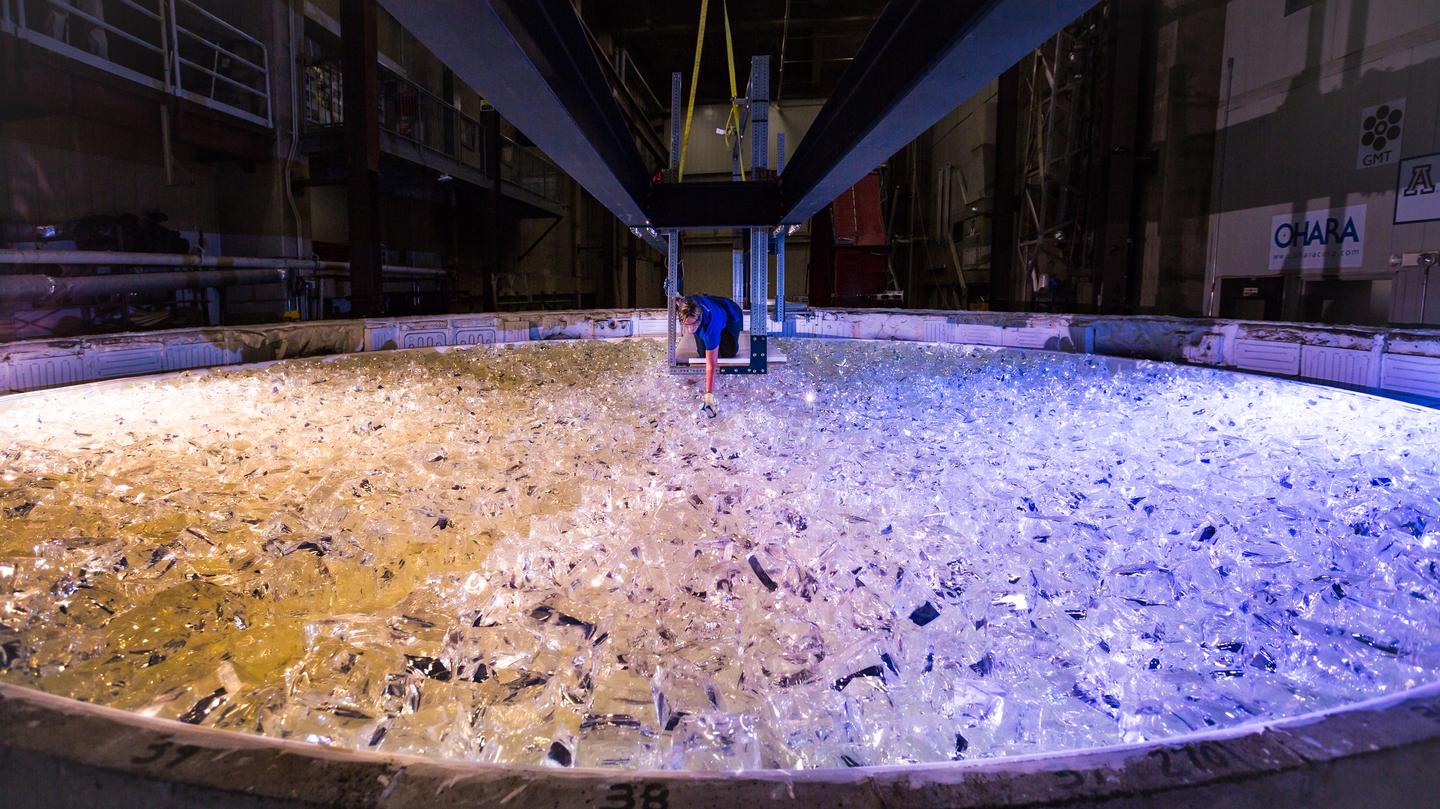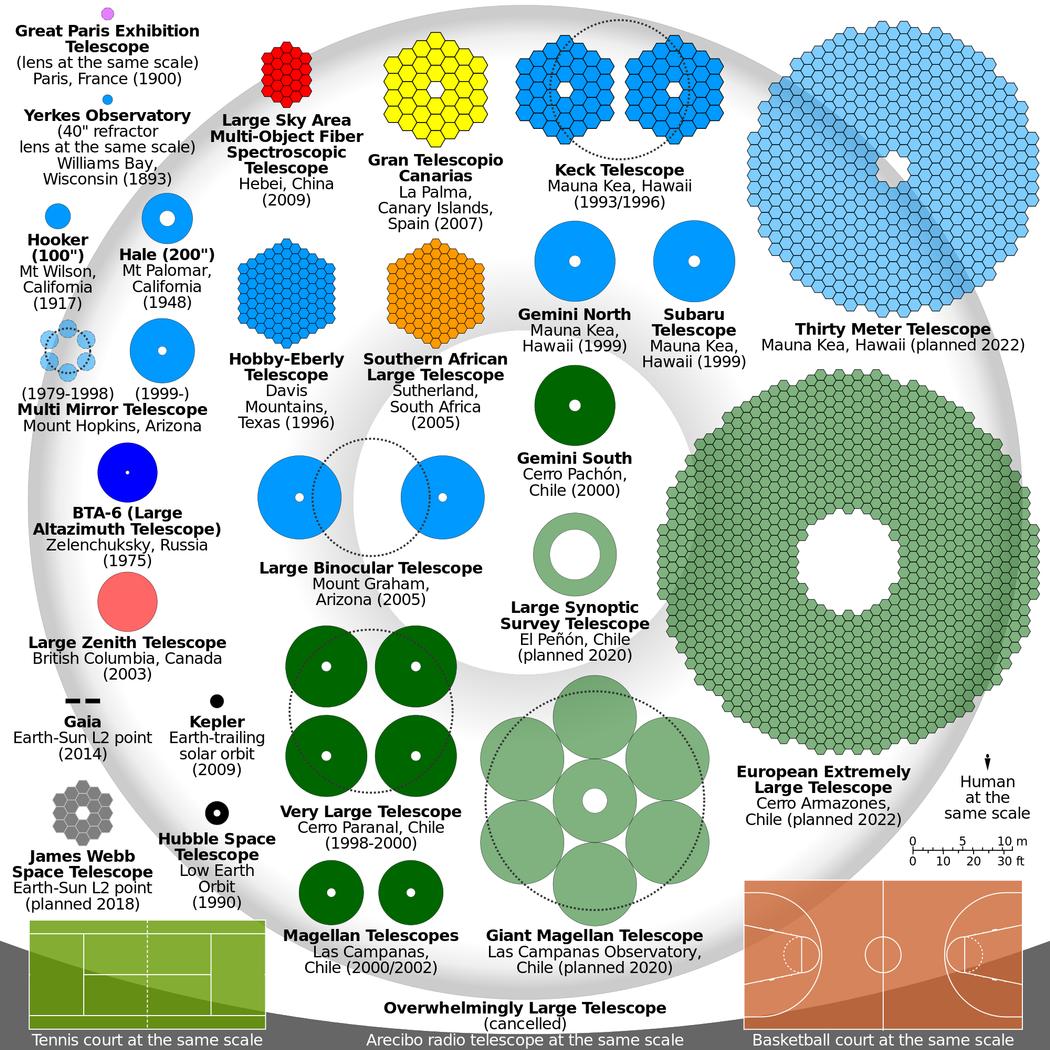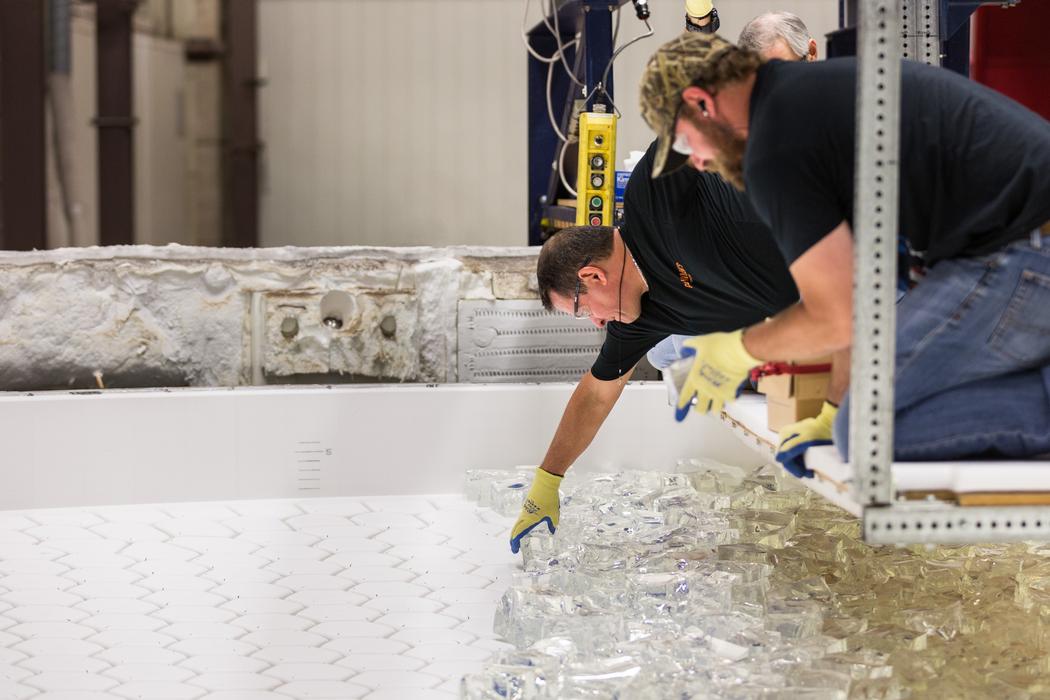 A representative of the telescope development team checks the placement of glass fragments made in Japan in a specialized melting furnace.
A representative of the telescope development team checks the placement of glass fragments made in Japan in a specialized melting furnace.A few days ago, experts at the University of Arizona began the process of casting the fifth mirror of the
Giant Magellan Telescope . There should be seven such mirrors in total, each one is only a part of a composite mirror. The total aperture of the telescope
will correspond to a telescope with a mirror diameter of 24.5 m. Each of the segments has a diameter of 8.4 meters, the weight of any of them is 20 tons. Casting is a very long process. The cooling of the finished mirror is about three months. After the telescope is ready, it will become the largest in the world.
The giant Magellan telescope is a reflector, the main mirror of which consists of seven mirrors. One of them is located in the center, six - at the edges. Something composite mirror resembles a flower. Work on the telescope began long ago. Scientists created its first segment in 2005, that is, 12 years ago. The last mirror is planned to be smelted in 2020, at the same time scientists hope to assemble the main mirror and in a few more years - to start operating the system.
According to the plan, the angular resolution of the Giant Magellan Telescope will be 10 times higher than that of the
Hubble . Since the telescope is ground-based and not orbital, scientists had to think about adjusting the geometry of the mirrors and the location of the composite mirror. This is necessary for leveling the atmospheric permeability oscillations and some other phenomena. The created telescope will be placed on the territory of the Las Campanas Observatory in Chile, in the
Atacama Desert .
This place was chosen because most of the year there are no clouds. In addition, there is not a single large settlement nearby that generates light interference. In fact, the Atacama Desert is one of the best places on Earth for astronomical observations.
The glass used to create the mirror has a low coefficient of thermal expansion - E6. It is clear that the manufacture of mirrors for a telescope with a diameter of 8.4 meters is a very difficult task. Initially, glass is prepared in Japan, in the form of a kind of "granules" or blocks. After that, all the granules are collected together in a rotating melting furnace and begin to heat. After reaching 1165 degrees Celsius, a homogeneous melt is formed, which must be cooled. It is cooling that is the longest process. Its duration is three months.
After the mirror cools, it must be carefully sanded and polished. The fact is that the structure of the mirror must meet certain conditions: its geometry must be very accurate and not differ from the calculated parameter by more than twentieth of the wavelength of visible light. That is, we are talking about nanometers.

Despite the fact that the smelting of mirrors began a long time ago, now only
one of them is completely ready for work, polished and polished. The second mirror is now polished. The third is being polished, the fourth is preparing for the grinding process (rough at first). The glass for the sixth mirror was delivered to Arizona, and the glass for the seventh was made.
When the telescope comes into operation, its effective aperture will be twice as high as any other telescope currently in operation. He himself is a complex project that requires a very clear and coordinated work of the whole team. One small mistake can bury the whole project. After polishing the characteristics of the created mirror, it checks the special device. Then the mirror is subjected to various tests in order to test its performance and compliance with the stated characteristics.
 Technicians distribute manufactured glass in a smelting furnace
Technicians distribute manufactured glass in a smelting furnace“We’ve almost reached the limit of the possibility of mirrors that a person can create and use,” says Robert Shelton, President of the Giant Magellan Telescope Organization.
Unfortunately, before the launch of the telescope is still far: it is planned to launch it in operation only in 2026. And this is only if during the implementation of the overall project there will be no difficulties.